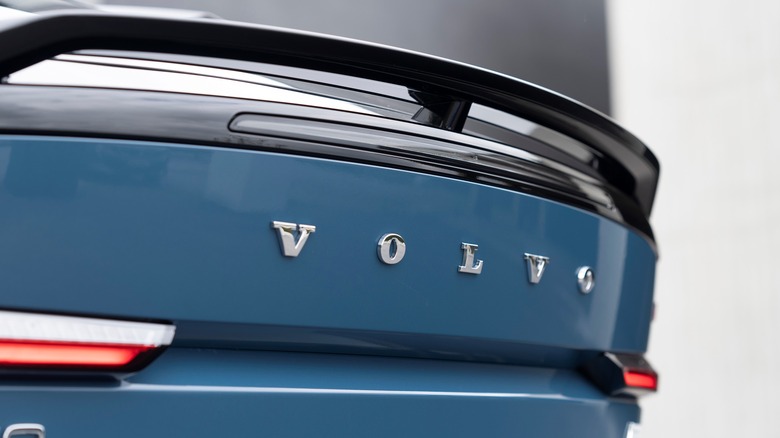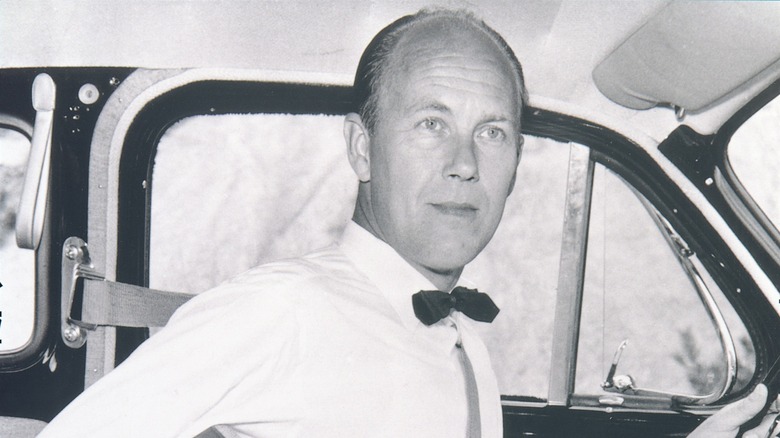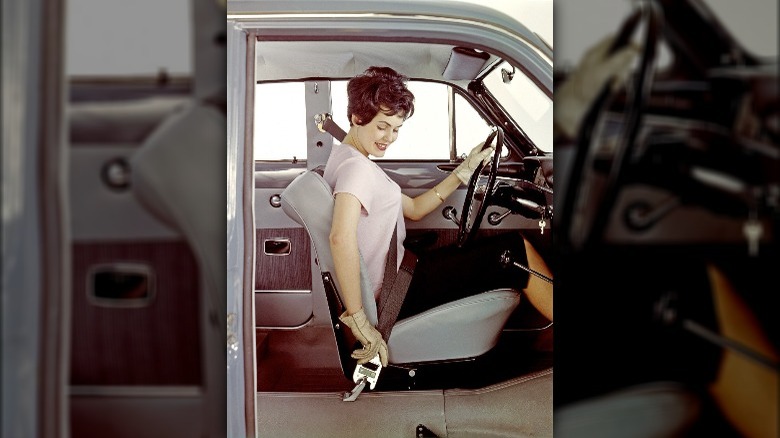Why Volvo Gave Away The Use Of Their Most Valuable Invention
Safety was at the core of Swedish automaker Volvo's founding principles. Volvo started as a subsidiary of Swedish bearing manufacturer AB SKF and produced its first car, the open-top ÖV4 (nicknamed Jakob), in 1927. By 1944, the Volvo PV444 became the first production car equipped with a laminated windscreen. It featured thicker glass that doesn't shatter into razor-sharp shards when broken, effectively preventing nasty cuts, injuries, or (heaven forbid) decapitations in a car accident.
However, the 1950s were a time of awakening in automotive safety. The number of vehicles on the road increased rapidly, and fatal accidents became familiar with each passing day. The US government started tracking vehicle fatalities in 1950 and reported 33,186 deaths due to road accidents. In addition, Gunmar Engellau, who served as Volvo's CEO from 1956 to 1971, lost a relative in a traffic accident, said Forbes. It was all due to the shortcomings of the two-point belt design, an early seat belt first seen in mid-19th century vintage airplanes.
Engellau's solution was to poach engineer Nils Bohlin from Saab in 1958. After working with ejector seats and four-point harnesses at Saab, Bohlin became Volvo's first Chief Safety Engineer. His first assignment was to develop a better seat belt design that wouldn't cause internal injuries in a high-speed crash.
Born in 1959: The three-point seat belt
Within a year as Chief Safety Engineer at Volvo, Nils Bohlin invented the three-point safety belt, a safety device that restrains the human body safely in extreme accidents. According to Bohlin's New York Times obituary, he developed the modern seatbelt using knowledge gained from ejector seats. "I realized both the upper and lower body must be held securely with one strap across the chest and one across the hips," said Bohlin. But the biggest challenge was to make it simple to use and operable with one hand, and Bohlin did it with aplomb.
Bohlin applied for and received a patent for the three-point safety belt in 1958. The first car to have a standard three-point safety belt was the Volvo PV544 which debuted in 1959, but the safety feature was initially met with skepticism. Volvo conducted a series of tests and trial impacts from the late 1950s to the 1960s to verify the benefits of its three-point seat belt, and the results were staggering. According to studies conducted by Bohlin in 1967 covering 28,000 road accidents, there were zero fatalities in the 37,511 people involved in those accidents who were all wearing three-point safety belts.
Giving it all away for the greater good
Volvo and Nils Bohlin made the patent available for all and resisted the urge to collect any licensing or royalty fees for their invention. By 1963, Volvo brought the three-point safety belt to the USA and other markets, and seat belts were standard for all new American cars from 1968 onwards. By the time Bohlin passed away in September 2002, the three-point seatbelt had saved millions of lives, amounting to more than 11,000 Americans each year.
The three-point safety belt is among the most critical safety innovations in the history of automobiles. Volvo could have earned billions if it cashed in on the patent, but the Swedish automaker chose to make the design available for everyone to use for one simple reason: to save lives.
Nils Bohlin didn't stop with the three-point seat belt. He started working on Volvo's SIPS (Side Impact Protection System) in the 1970s, and Volvo (once again) became the first carmaker to deliver a major safety feature with inflatable side curtains. Bohlin retired in 1985 and passed away in 2002, but his memory, dedication, and goodwill will live in the hearts and minds of drivers and auto enthusiasts forever.


